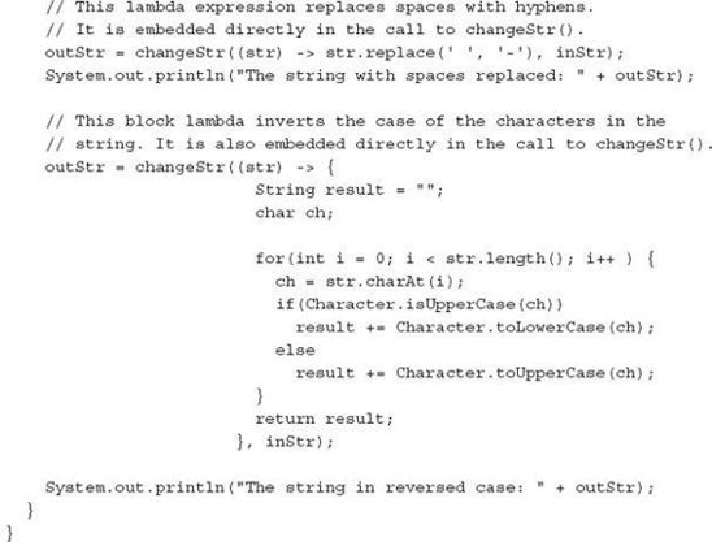Java Reference
In-Depth Information
As you can see by looking at this code, embedding the lambda that replaces spaces
with hyphens in the call to
changeStr( )
is both convenient and easy to understand.
This is because it is a short, expression lambda that simply calls
replace( )
to replace
spaces with hyphens. The
replace( )
method is another method defined by the
String
class. The version used here takes as arguments the character to be replaced and its
replacement. It returns a modified string.
For the sake of illustration, the lambda that inverts the case of the letters in a string
is also embedded in the call to
changeStr( )
. However, in this case, rather unwieldy
code is produced that is somewhat hard to follow. Usually, it is better to assign such a
lambda to a separate reference variable (as was done for the string-reversing
lambda), and then pass that variable to the method. Of course, it is technically correct
to pass a block lambda as an argument, as the example shows.
One other point: notice that the invert-case lambda uses the
static
methods
isUp-
perCase( )
,
toUpperCase( )
, and
toLowerCase( )
defined by
Character
. Recall that
Character
is a wrapper class for
char
. The
isUpperCase( )
method returns
true
if
its argument is an uppercase letter and
false
otherwise. The
toUpperCase( )
and

